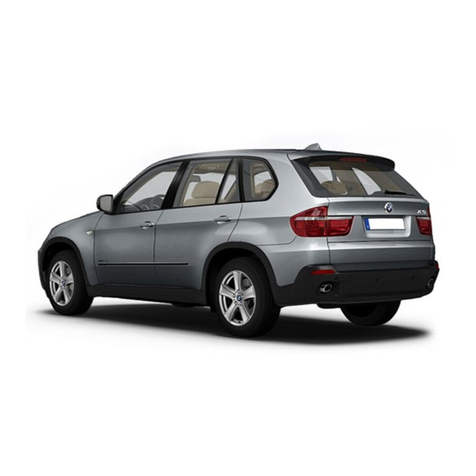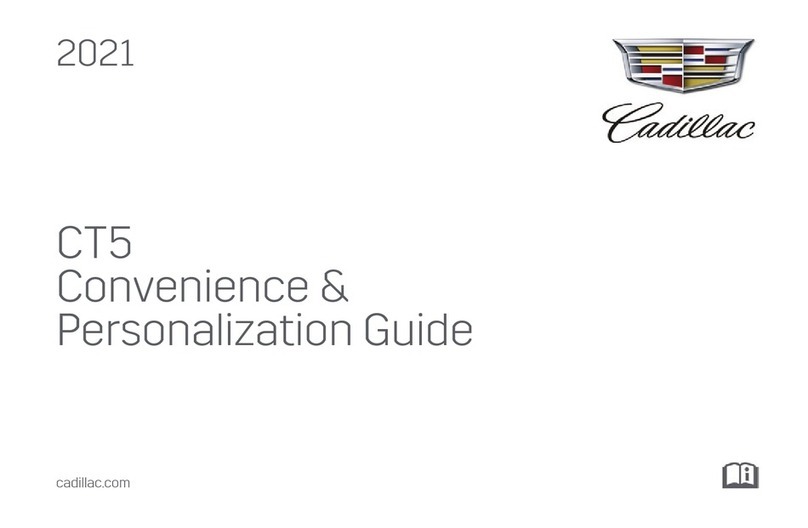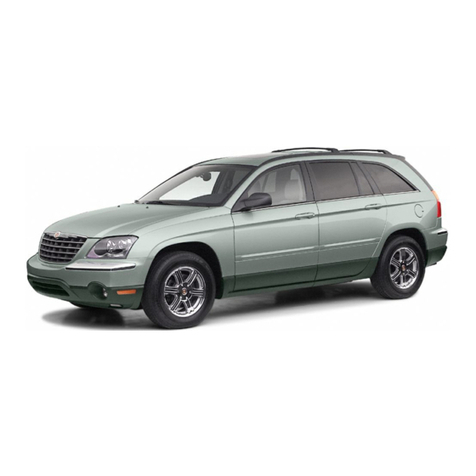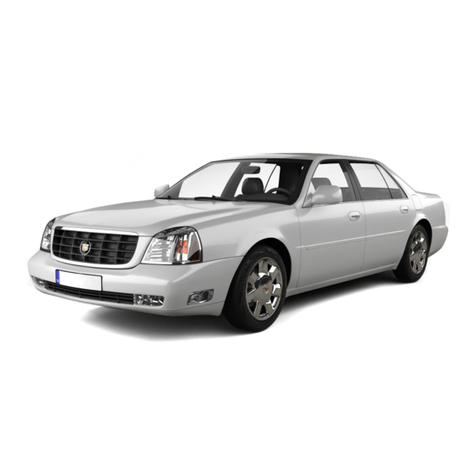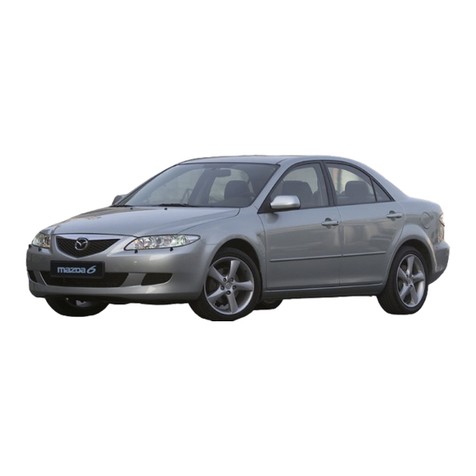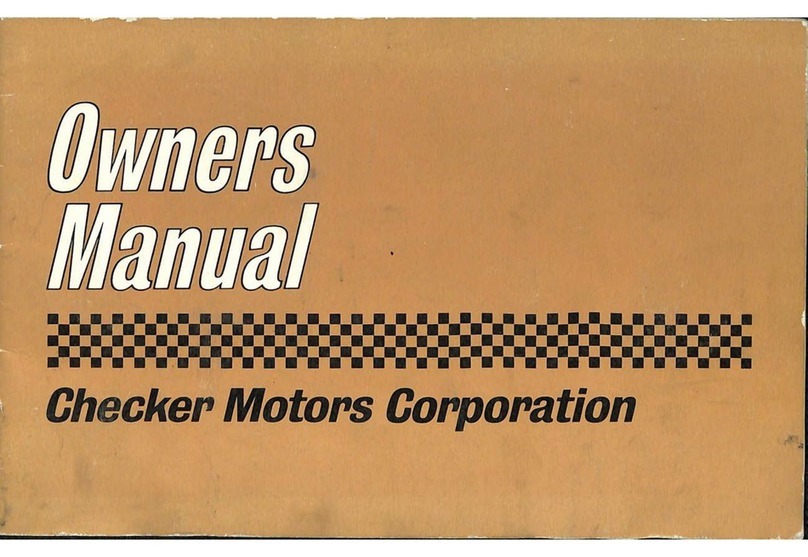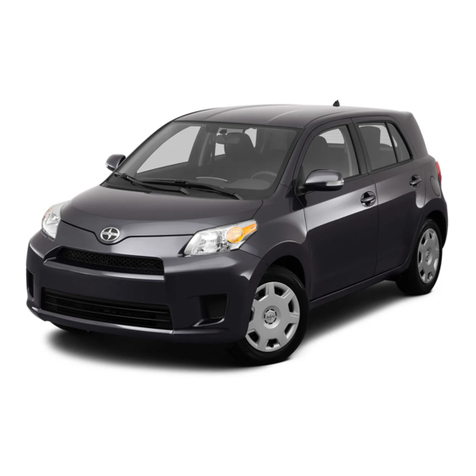MPM Erelis 2018 User manual

MPM Motors ERELIS 2018 User Manual
ENG

Contents
2
Contents 2
Introduction 4
Specic features of the vehicle 5
Introduction 5
Use of this manual 5
Danger, attention and warnings 6
In brief section 6
Unlocking 6
Locking 6
Seat adjustments 6
Seat positions 6
Seat backs 7
Seat belts 7
In brief section 7
Adjustment of rear view mirrors 7
Exterior wing mirrors 8
Adjustment of steering wheel 8
Overview of instrument panel 9
Flashing the headlights, headlight full
beam, dipped headlights 11
Indicators and change of direction and
lane 11
Hazard lights 11
Horn 12
And dipped headlights 12
Windscreen wipers 12
Front windscreen washer 12
Heating and air conditioning 12
Demisting and defrosting windscreens 13
Air conditioning 13
Gearbox 13
Starting the engine 14
Parking 14
Keys, doors and windows 15
Key, radio frequency remote control 15
Unlocking 16
Keys, doors and windows 16
Locking 16
Activating the alarm 16
Deactivating the alarm 17
Key radio frequency remote control
failure 17
Starting prevention device 17
Boot 17
Exterior wing mirrorss 18
Electric windows 18
Child locks on rear windows 19
Excess load 19
Sun visor 19
Seats, safety systems 20
Front seats 20
Seat positions 20
Seat adjustments 20
Seat belts 21
Three-point seat belts 22
Rear seats 23
Airbag system 23
Child seats 24
ISOFIX Child seats 25
Where to fit a child seat 25
Authorised positions for fitting
a child seat 26
Authorised positions for fitting a child
seat using the ISOFIX mountings 27
Storage compartments 29
Storage 29
Information on storage 30
Instruments and controls 31
Controls 31
Horn 31
Front windscreen wipers 32
Windscreen wash 32
Power points 32
Cigarette lighter 33
Warning lights and dials 33
Speedometer 33
Odometer 33
Daily odometer 33
Rev counter 34
Fuel gauge 34
Temperature gauge of engine 34
Cooling liquid 34
Instrument panel warning lights 35
Central console warning lights 36
Indicator 36
Driver seat belt reminder 36
Airbag 36

Contents 3
Charging system 36
Malfunction warning light 36
Brake and clutch system 36
Antilock brake system (ABS) 36
Brake uid and clutch uid level 37
Antilock brake system (ABS) 37
Exterior lighting 37
Headlights 37
Foglights 37
Door open warning 37
Lights 38
Exterior lighting 38
Lighting controls 38
Air conditioning 41
Air conditioning systems 41
Air conditioning 42
Recycling air 42
Air vents 42
Maintenance 43
Driving and use 44
Ignition switch positions 44
Starting the engine 45
Exhaust gas 45
Deactivating starting prevention device 45
Manual handbrake 46
Fuel 46
Fuel consumption 46
CO2 emissions 48
Care of your vehicle 49
Vehicle checks 50
Bonnet 50
Replacing bulbs 54
Electrical circuit 58
Vehicle tool kit 60
Wheels and tyres 60
Tyre pressure 61
Tyre tread depth 61
Changing the size of wheels and tyres 61
Snow chains 62
Changing a wheel 62
Spare wheel 63
Lifting point on a ramp 63
Towing 66
Exterior and interior care 66
Service and maintenance 69
General information 69
Fluids, lubricants
and recommended parts 69
Technical features 71
Identication of the vehicle 71
Performance 73
Weight of the vehicle 73
Dimensions of the vehicle 73
Capacity 74
Tyre pressure 74
Contacts / Aftersales service 75

Introduction
Fuel
Weight
Tyre ination pressure Fitting front rear
Engine oil
Description
Viscosity
Base model unladen weight
Summer tyres
Winter tyres
Quality
Total weight authorised
Introduction
4

Introduction 5
Specic features
of the vehicle
Introduction
Use of this manual
You should ll in the previous page with
the information on your vehicle in order
to keep them easily available. These
details can be found in the following
sections
« Service and et maintenance » and
«Technical specications » as well as in
the identication leaet.
You will nd a brief overview in
the « In Brief Section » .
• The table of contents at the start
of this manual and at the beginning of
each section indicates where the
information can be found.
• The index allows you to search
for specic information.
• This User Manual shows
illustrations using left-hand drive vehicles.
The use of right-hand drive vehicles is
similar.
• The User Manuals uses the
factory designations for engines. The
corresponding commercial names can be
found in the « Technical features » section.
• Directions, such as left, right,
forwards and backwards, are always given
as if you are facing the front of the vehicle.
Approved MPM Repairers oer a
rst-rate service at a reasonable rate.
Their experienced sta trained by MPM
work to specic MPM instructions.
The documention for customer use should
always be kept at hand in the vehicle.
This user manual contains all the
information that you will need in order to
drive your vehicle eciently and safely.
Please advise passengers of the vehicle of
the risks of accident and injury if misused.
You should always abide by the laws and
regulations in force in the country where
you are.
These laws may dier from the information
contained within this User Manual. Where
it is indicated to contact a garage, we
advise you to look for an Approved MPM
Repairer.
This manual describes all the options and
functions available for this model. Some
descriptions may not apply to your vehicle
due to variations in the country where you
purchased your model, features which are
specic to your country, special accesso-
ries or equipment.

Danger, attention and
warnings
The paragraphs
marked Danger provide information
relating to a risk of Fatal injury.
Ignoring this information could lead to
A risk of death.
The paragraphs marked Warning
provide information relating to
a risk of damage to the vehicle.
Ignoring this information could lead to
damage to the vehicle.
The paragraphs marked Attention
provide information relating to a risk of
accident or injury. Ignoring this
information could lead to a risk of
injury.
Danger
Warning
Attention
In brief Adjustement of seats
Seat position
Pull the handle, move the seat and release
the handle.
Allow the seat to click into position, you
should hear the click.
Locking
To lock the vehicle, press
button 1.
Locking is indicated by a single rapid -
ash of the indicator lights.
If a door (door, boot...) is not closed
properly, the vehicle will not lock
Unlocking
With the remote control
To unlock the vehicle, press
button 1.
Unlocking is indicated by three successive
rapid ashes of the indicator lights.
With the remote control

7
In Brief
Do not sit closer than 25 cm away from the
steering wheel in order to allow the
airbag to inate safely.
Danger
Seat backs
Pull the lever, adjust the angle of the seat
back and release the lever. Allow the seat
to click into position, you should hear the
click.
Seat belt
Pull the seat belt and click it into the
belt lock. The seat belt must not be
twisted and must be worn close to the
body. The seat back must not be tilted too
far back (approximately 25°maximum).
To unfasten the seat belt, press the red
Button on
Adjustment of rear-view
mirrors
Interior rear-view mirror
To correctly adjust the rear-view mirrors,
position your back against the seat back,
so that you move only your head.
At the top of the interior rear-view mirror,
the top of the rear window should be
visible without moving your head.
To adjust the interior rear-view mirror,
handle it with both hands.

Exterior rear-view mirrors
To adjust the exterior rear-view mirrors:
- Place switch A to the right or to the
left to select the corresponding mirror.
- Move switch B in any of the four direc-
tions to make the adjustments.
- Replace switch A in a central position.
Ensure that the vehicle is stopped before
adjusting the mirrors.
Danger
Adjustment
of the steering wheel
Release the lever, adjust the steering
wheel, replace the lever and check that
is fully locked. Only adjust the steering
wheel when the vehicle is stopped and the
steering lock is o.
In Brief
8

9
In Brief
Overview of the dashboard
1
6
1013
13 12
11
14
7982
22
15 3 161718 4 5
2021
2324

In Brief
10
1 – Side air vents
2 – Indicators for changes of direction
and lane
- Flash of headlights
3 – Instruments
- Airbag deactivation warning light
- Seat belt warning light
4 – Hazard lights
5 – Central air vents
6 – Glove box
7 – Ventilation adjustments
8 – Air conditioning
9 – Gear lever
10 – Horn
11 – Driver airbag
12 – Cupholder - Storage
13 – Fuse box
14 – Steering wheel adjustment
15 – Exterior lighting control
16 – Front windscreen wipers
- Front windscreen wash
17 – Ignition lock with steering lock
18 – Handbrake
19 – Cigarette lighter
20 – Heated rear window, heated door
mirrors
21 – Radio
22 – Boot release lever
23 – Headlight adjustment system
24 – Light switch selector
- Dipped headlights
- Full beam headlights
- Front fog lights
- Rear fog lights

11
In Brief
Headlights and
Headlight ash
Indicators to change
direction or lane
Hazard lights
• To activate the position lights, turn
the rotary switch to the right on the
positions:
• 0 = Lights o
• Auto = Automatic lighting according to
brightness
• = Position lamps
• = Dipped beam
• = Front fog lights, pull out the rst
notch (see picture A)
• = Rear fog lights, pull out at the
second notch to add the rear fog
lights (see picture B)
Indicators switched on as a visual alert to
warn other road users in the event of a
vehicle breakdown, towing or
accident .
Activation with the button.
• To ash lights at close intervals as a
warning, briey pull and release the
stalk.
• Pushing the stalk upwards activates
the right indicator.
• Pushing the stalk downwards acti-
vates the Left indicator.
A B +

In Brief
12
Horn and
Dipped headlights
Windscreen wipers
To warn of immediate danger, or to
warn another motorist, sound the
horn by pressing .
The windscreen wipers are directly -
controlled by the driver.
Push the stalk up or down to
activate the windscreen wipers
HI = rapid
LO = slow
= intermittent
OFF = switch o
MIST = a single wipe
Front windscreen washer
Heating and air conditioning
Pull the windscreen wiper stalk towards
you.
The windscreen wash and wipers will
operatesimultaneously.
Temperature
To adjust the temperature, turn switch A
from blue (cold) to red (warm) to
regulate the temperature to suit you.
The heater is only really eective when
the engine has reached its normal
operating temperature.
Air ow rate
To adjust the rate of air ow, turn knob C
from position 1 to position 4, to obtain
an adequate rate of air ow to ensure -
your comfort.

13
In Brief
Demisting and deicing the
windows
Press button
Temperature switch on the warmest
setting.
Air conditioning switched on.
Distribution of air
Central and lateral vents.
To modify the distribution of air in the
passenger compartment, turn switch B to
the desired position:
The air conditioning system cools and
dehumidies the air whenever the outside
air temperature is slightly above freezing
point.
Condensation may then form which
then results in water dripping from under
the vehicle.
If you do not want the air cooled or dried,
switch o the air conditioning in order to
save fuel.
Air conditioning
Gearbox
Reverse : when the vehicle is at a stop,
press the clutch pedal, position the gear
selector lever on the gear R while opera-
ting upward the lever/button located under
the shifter.
If the gear does not engage, bring the
gear lever back to neutral, release the
clutch pedal then declutch then try again to
put the gear into reverse.
Manual gearbox
Front screen
Front screen and passenger
footwell
Passenger footwells.

In Brief
14
Setting o
Checks to carry out before setting o :
• Tyre pressure and condition of the tyres.
• Engine oil level and level of uids.
• All mirrors, windows, exterior lights
and number plates should be in good
condition, clean and free of all snow
or ice.
• Correct position of all mirrors, seats
and seat belts.
• Check that the brake system is
working at a low speed, particularly
when the brakes are damp.
Starting the engine
Turn the key to position 1.
Gently turn the steering wheel to release
the steering lock.
Push the clutch and brake pedals in.
Do not use the accelerator pedal.
Turn the key to position 3 and release it.
Parking
Always apply the handbrake. Apply the
handbrake without pushing in the locking
button. When on a slope or a hill, apply it
as tightly as possible. Push the brake
pedal in at the same time in order to
reduce the eort required.
Switch o the engine. Turn the ignition
ket to position 0 and remove it.
Turn the steering wheel until the steering
lock engages (antitheft).
When the vehicle is facing downhill, put it
into reverse gear. Turn the front wheels
towards the curb.
Lock the vehicle and set the alarm with
button 1 on the remote control key.
Do not park the vehicle on an easily
ammable surface. In eect, the surface
could ignite due to the high temperature of
the exhaust system.
Close the windows. The engine cooling fan
may start up even when the engine is swit-
ched o.

15
Keys, doors and windows
Remote control……................................15
Activating the alarm................................16
Deactivating the alarm ...........................17
Boot..........................................................17
Exterior mirrors……….............................18
Interior rearview mirrors….......................18
Electric windows……..............................18
Child locks on rear windows……………..19
Sun visors …...........................................19
Remote control
The remote control is used to control :
• Central locking
• Antitheft device
• Alarm
The range of the remote control is 30
meters maximum. This distance may be
reduced by external factors. The hazard
lights conrm that it is activated. Handle
the remote control with care, protect it from
dampness and high temperatures, avoid
all unnecessary activation.
A fault :
If activation of the central locking is not
possible using the remote control key, it
may be due to the following causes :
■ Out of range ;
■ Battery voltage too low ;
■ Frequent and repeated use of the
remote control while the vehicle is
out of range, this requires the
device to be reprogrammed.
■ Central locking overload caused by too
frequent operations, which interrupts the
power supply for a few moments.
■ Overlapping of radiowaves with more
powerful external radio installations.
Changing the remote control battery
Replace the battery as soon as the range
begins to reduce. The remote control has
a warning light when the battery i slow. At
each press of a button, the LED light will
start ashing.
Use only CR 16161 type batteries. The
use of dierent batteries may
dammage the remote control.
Attention
To replace the remote control battery,
proceed as follows :
■ Separate the two sides of the cover
which make up the remote control, taking
care not to damage the electronic circuit
Keys, doors and windows

Keys, doors and windows
16
Locking
To lock the vehicle, press button 1.
Locking is indicated by a short ash of the
indicator lights.
If a door (door, boot...) is not closed pro-
perly, the vehicle will not lock.
Unlocking
■ Remove the run-down battery and insert
the new one, taking care to respect the
polarity.
■ Close the two halves of the cover and
check that the remote control is working.
Les piles ne doivent pas être jetées
avec les ordures ménagères. Elles
doivent être recyclées via les centres
de collecte appropriés.
Warning
With the remote control
Unlocking is indicated by three short suc-
cessive ashes of the indicator lights.
To open the boot from a distance, press
button 2.
As a security messure (passengers on
board), never leave the vehicle without
the key, even for a short time.
Warning
To unlock the vehicle, press button 1.
With the remote control
Activating the alarm
To set the alarm system, press button 1, or
insert the contactor into the socket situated
to the left of the steering wheel. Once the
alarm is set this way
Conditions for setting o the alarm
The alarm will be set o if one of the
following conditions is fullles :
■ Handling of the electrical cables
■ Attempt to start the vehicle
■ Deterioration or switching o of the
Battery.
■ Breach of the doors
■ Breach of the boot
■ Breach of the bonnet
■ Intrusion into the passenger
compartment (occupancy sensor.)
If the alarm is set of and the vehicle is within
your site, you can stop it at any time but
pressing button 2.
you have 45 seconds before the all the
alarm functions are active.

17
Keys, doors and windows
To deactivate the alarm system,
press button1, or insert the contactor into
the plug at situated at the left of the
steering wheel.
For further information regarding the alarm
system, refer to the instructions for the
GEMINI 7590 system.
Pressing button 2 while the alarm siren
is sounding will cut o the siren, but
the alarm remains activated.
Warning
Deactivating the alarm
Fault in the remote control
system
Mechanical unlocking
If the remote control fails, unlock the
driver’s door manually by turning
The back-up key in the lock.
Boot
Manual opening and closing
To open the boot, press the button
below left of the steering wheel.
The tailgate is shut manually.
Alternatively, press the button on the Boot
emblem shown in the next page.
If the ignition is switched on and it is
imossible to start the engine, the system
may fail.
Switch o the ignition and try again to start
the engine.
If the problem persists, contact a garage.
Starting prevention device
The GEMINI system checks the ignition
switch and veries if the vehicle can be
started with véhicule peut the correct key.
The starting prevention device works
Automatically if the key is removed from
the ignition lock.

Keys, doors and windows
18
General remarks on operating
the tailgate :
Do not drive with the tailgate fully or
partially open, for example if you are
transporting cumbersome items,
as the invisible and odorless but toxic
exhaust fumes could enter the inside
of the vehicle. These fumes may cause
unconsciousness and can be fatal.
Before opening the tailgate, check that
there is nothing in the way above it, such
as a garage door, to avoid dammaging
the tailgate.
Always check the space available
Above and behind the tailgate.
Attention
Warning
Door mirrors
Electrical adjustment
To adjust the exterior door mirrors:
- Place switch A to the right or to the left
to select the corresponding rearview mirror.
-Move switch B in all four directions
to adjust the position.
- Bring switch A back to the central position.
For the safety of pedestrians, the door
mirrors fold back if they are hit hard.
To reposition the door mirror push gently
on its case.
Electric windows
Switch on the ignition to operate the
electric windows.
Interior rearview mirrors
To correctly adjust the interior rearview
mirrors, position your back against the seat
back, so that you move only your head.
At the top of the interior rearview mirror, the
top of the rear window should be visible
without moving your head.
To adjust the interior rearview mirror, handle
it with both hands.
Manual adjustment
PRESS HERE

Handle the electric windows with care.
Risk of injury, especially for children.
If children are seated in the rear seats,
engage the child lock of the electric win-
dows.
Close the windows paying close atten-
tion to the closing area. Ensure that no-
thing can become trapped.
Attention
19
Keys, doors and windows
Move the switch of the window
concerned by pushing it to open or
lifting it to close.
Safety feature
If the window comes across resistance
more than halfway through automatic
closing, it stovvvv immediately.
The window swithces no longer
function when the key is in the 0
position, or after the key has been
removed. To reactivate them, start
the ignition.
Warning
Child-locking the rear
windows
Sun visor
The sun visors can be lowered
and pivoted laterally to avoid glare.
If the sun visors are tted with vanity
mirrors, their covers must be closed
whilst driving.
Always remove the key when leaving
the vehicle, even for a short time.
In the event of catching something
while operating the windows, you
must move the window the opposite
way.
To do so, push the appropriate switch.
When the driver activates the
switches of the passenger windows,
he must ensure that nobody
prevents the correct closure of the
windows.
The driver must ensure that the
passengers use the windows
correctly.
Warning
Overload
Push the switch marked
to deactivate the windows of the rear
doors, the LED light will come on.
To reactivate them press the switch
again.
If the windows are operated frequently
at short intervals, the window switches
will be disactivated for a time.

Seats, security systems
20
Front seats ..............................................20
Seat belts……………...............................21
Rear seats…............................................23
Airbag system…......................................23
Child seats...............................................24
Child seats...............................................25
Seats, child seats
Sit with your buttocks as close as possible
to the seat back.
Adjust the distance between the seat and
the pedals so that the legs are gently bent
when you push down on the pedals.
Push the front passenger seat right back.
Sit with your shoulders as close as
possible to the seat back. Adjust the tilt of
the seat bask so that you can reach the
steering wheel with your arms slightly bent.
When turning the steering wheel, your
shoulders should keep touching the seat
back.
Do not tilt your seat too far back. The
maximum recommended tilt is
approximately 25°.
Ensure that there is the space of at least
one hand between your head and the
Front seats
Seat position
Seat adjustment
Only drive if your seat is correctly
adjusted.
Never adjust the seats while driving.
They could move in an uncontrolled
way.
Do not sit closer than 25 cm from the
steering wheel in order to allow for a
safe deployement of the airbag.
Attention
Attention
Danger
Table of contents



